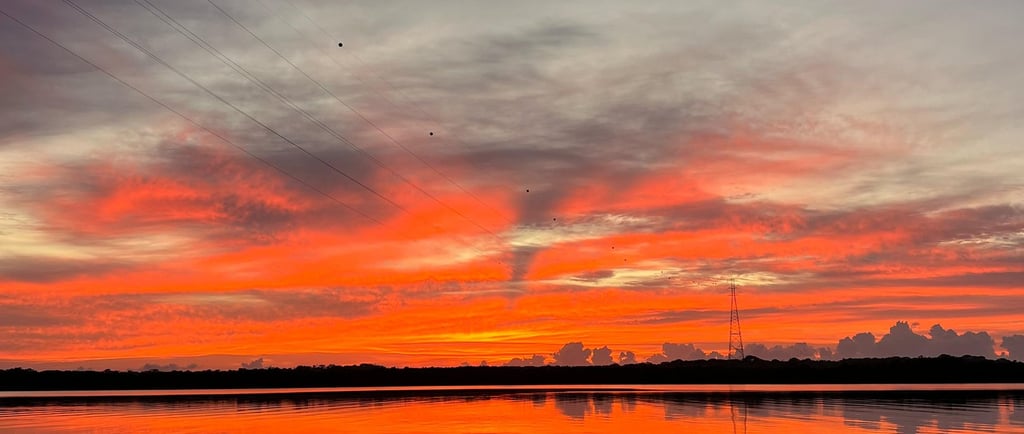Cananéia. Natureza que acolhe, história que valoriza.
We are Brazil in a single view.
A presentation of Brazil’s vast diversity in the south of São Paulo State.
João Victor Gomes
6/4/20253 min read


Southern São Paulo: A Tourist Catalogue of Brazil Just 125 Miles from the Capital
Imagine a place where Brazil’s natural and cultural wonders come together in a single territory. In the southern part of São Paulo state, just about 125 miles from the capital, you'll find a diversity of attractions that represent the very best of Brazilian tourism — all located within an average distance of 25 miles from one another.
Climbing and Caving Adventures in PETAR
The Alto Ribeira State Tourist Park (PETAR) is a paradise for adventure lovers. PETAR holds the highest concentration of caves in Brazil — and possibly the world — with 441 in the municipality of Iporanga and over 80 more in Apiaí. Featuring challenging trails and crystal-clear waterfalls, the park offers climbing, rappelling, and caving experiences within the lush Atlantic Forest. Casa de Pedra Cave, with its impressive 216-meter-high (708 feet) entrance, is the largest cave mouth in the world — a natural spectacle on its own.
Untouched Beaches of Ilha Comprida
With 46 miles of virtually deserted and unpolluted beaches, Ilha Comprida is a haven for those seeking tranquility and direct contact with nature. The island preserves dunes, mangroves, and a rich, unique biodiversity, making it an ideal destination for ecotourism, birdwatching, and long walks in untouched environments.
Historic Cities: Cananéia and Iguape
Among the earliest cities in Brazil, Cananéia and Iguape are believed to be older than the country itself — founded even before the official "discovery" of Brazil. Exiled Portuguese and Spanish merchants lived and traded in Cananéia long before colonization began. Located about 125 miles from São Paulo, these coastal towns are historical treasures. Their cobbled streets, centuries-old churches, and colonial houses preserve stories from the dawn of Portuguese settlement.
The Cananéia Estuary: The Womb of the Atlantic
The Cananéia estuary is one of the richest ecosystems in Brazil. Known as the "womb of the Atlantic," this region is a breeding ground for countless marine species and is one of the largest coastal wetlands in the country. With its mix of mangroves, winding waterways, and vibrant vegetation, the landscape feels like a fusion between the Pantanal wetlands and the Amazon rainforest — all located in southern São Paulo.
Preservation of the Atlantic Forest
While much of the Atlantic Forest has been lost over the centuries, southern São Paulo is a rare exception. Thanks to the efforts of NGOs, local associations, traditional communities, and private reserves, environmental awareness is deeply rooted in the region. This has allowed ecotourism and sustainable development to grow in harmony with conservation.
Rapids and Mountains by the Sea
One of the region’s unique features is the presence of mountain ranges and river rapids just a few miles from the coastline. Mountain trails, waterfall-fed rivers, and landscapes that combine altitude and sea level offer the perfect setting for both adventure and contemplation. Activities like tubing, trekking, and canoeing are available for both beginners and experienced adventurers.
Itapitangui: The Historical and Logistical Hub of Regional Tourism
More than a strategic location, Itapitangui — a district of Cananéia — is a true national historic landmark. It was from here that the first bandeira (exploratory expedition) in Brazil departed, and the area played a key role during the Paraguayan War. It was also the site of the introduction of cattle into Brazil, making it one of the cradles of the country’s livestock industry.
Besides its historical importance, Itapitangui is strategically positioned. It connects to the SP-193 highway, which links Alto Ribeira to the BR-116 — Brazil’s main north-south highway. It lies just 2.5 miles from Porto Cubatão, where boats depart to the estuary and to the islands of Cananéia and Ilha Comprida. The coastal road passing through Mandira — a quilombola community known for community-based tourism — Ariri, and the Telegraph Trail leads to the border between São Paulo and Paraná: a natural, flat frontier connecting two worlds within just a few steps.
Discover Southern São Paulo and Experience All of Brazil in a Single Trip
Preserved nature, living history, and endless possibilities await you.
Everything presented here — caves, untouched beaches, historic towns, vibrant estuaries, mountains, rapids, and preserved forests — can be found across Brazil and are often iconic tourist destinations in their own right. Historic towns in Minas Gerais, the colonial charm of Paraty, the wetlands of Mato Grosso, Amazonian rivers, the Agulhas Negras peaks, and Itatiaia National Park are just some examples.
But in southern São Paulo, we have been gifted with the rare privilege of having all of Brazil in one place — a stretch of land where the country's natural and cultural diversity comes together within just a few miles. An irresistible invitation for anyone who wants to experience many different aspects of Brazil in a single journey.
Contact
Contact us for more information about Cananeia.
about
help
contato@cananeia.org
© 2024. All rights reserved.
Cananeia is a natural and historical treasure in southern São Paulo, forgotten for centuries. This website was created to share its unique beauty with the world — a place that echoes the Amazon, the Pantanal, the Rain Forest, Mangroves and the true heart of Brazil.
